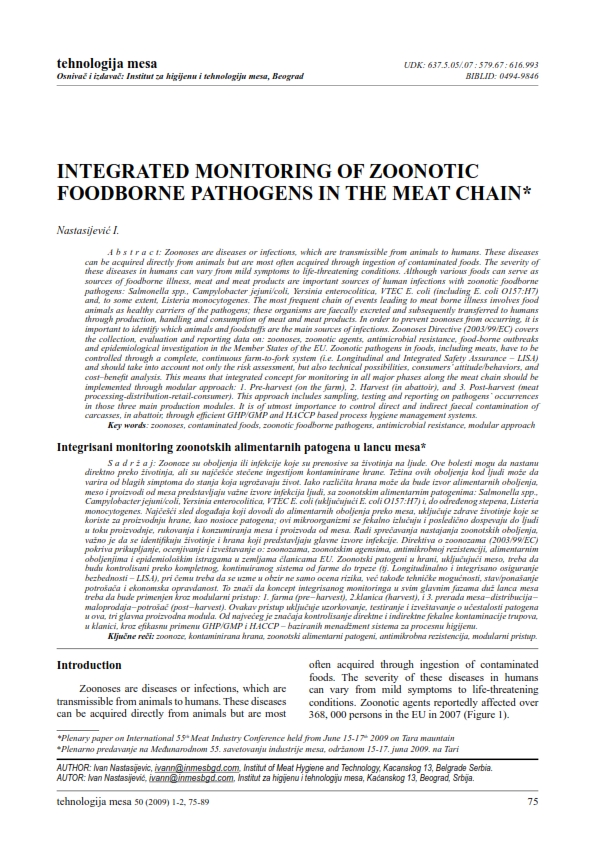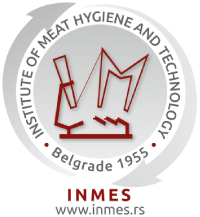INTEGRATED MONITORING OF ZOONOTIC FOODBORNE PATHOGENS IN THE MEAT CHAIN
Abstract
Zoonoses are diseases or infections, which are transmissible from animals to humans. These diseases can be acquired directly from animals but are most often acquired through ingestion of contaminated foods. The severity of these diseases in humans can vary from mild symptoms to life-threatening conditions. Although various foods can serve as sources of foodborne illness, meat and meat products are important sources of human infections with zoonotic foodborne pathogens: Salmonella spp., Campylobacter jejuni/coli, Yersinia enterocolitica, VTEC E. coli (including E. coli O157:H7) and, to some extent, Listeria monocytogenes. The most frequent chain of events leading to meat borne illness involves food animals as healthy carriers of the pathogens; these organisms are faecally excreted and subsequently transferred to humans through production, handling and consumption of meat and meat products. In order to prevent zoonoses from occurring, it is important to identify which animals and foodstuffs are the main sources of infections. Zoonoses Directive (2003/99/EC) covers the collection, evaluation and reporting data on: zoonoses, zoonotic agents, antimicrobial resistance, food-borne outbreaks and epidemiological investigation in the Member States of the EU. Zoonotic pathogens in foods, including meats, have to be controlled through a complete, continuous farm-to-fork system (i.e. Longitudinal and Integrated Safety Assurance – LISA) and should take into account not only the risk assessment, but also technical possibilities, consumers’ attitude/behaviors, and cost–benefi t analysis. This means that integrated concept for monitoring in all major phases along the meat chain should be implemented through modular approach: 1. Pre-harvest (on the farm), 2. Harvest (in abattoir), and 3. Post-harvest (meat
processing-distribution-retail-consumer). This approach includes sampling, testing and reporting on pathogens` occurrences in those three main production modules. It is of utmost importance to control direct and indirect faecal contamination of carcasses, in abattoir, through effi cient GHP/GMP and HACCP based process hygiene management systems.





